Getting the most from a pressure washer
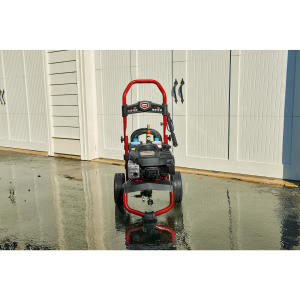

Pressure washers, also known as power washers, make it easy to tackle the most serious cleaning jobs around your home. More powerful and efficient than a garden hose, a pressure washer produces a forceful stream of water to blast away dirt. It also lets you apply a cleaning solution to speed up the job of removing grime, for sparkling clean results.
Prepare to pressure wash
Before using your pressure washer, read the owner's manual carefully to make sure you completely understand how to operate the pressure washer safely. Then take a few minutes to set up your pressure washing project.
Choose a cleaning solution. Plain water is fine for sweeping debris off paved areas, but it doesn't provide much actual cleaning power. To remove dirt, bugs, road grime and stains, choose a detergent formulated specifically for pressure washing.
If you plan to use the detergent near lawns or gardens, look for one labeled as safe for plants. Don't use bleach or household cleaners for pressure washing; they could damage the pump, harm plants and discolor the surface you clean. Using bleach or household cleaners could also void the warranty on your pressure washer.
Do the pre-check. Before each use, perform any pre-use checks recommended in the owner's manual. Inspect each filter and screen as needed. Look for leaks, cracks, or signs of wear in the high-pressure hose, the spray gun and the nozzle extension assembly and replace any damaged parts. Make sure all of the parts are firmly connected. Check the oil and add more if needed. Also, top off your tank if your pressure washer runs on gasoline or diesel fuel.
Set up the work area. Place your pressure washer on a stable surface. Remove loose objects from the site where you plan to use the machine and the area where you intend to stand. Locate electrical outlets, light fixtures, fuse boxes, telephone junction boxes, power lines and other things that can give you an electric shock so you can avoid them while washing. Remove window screens if you plan to pressure wash your home's exterior. Keep children and pets away from your work area.
Get your gear on. Tie up long hair and remove jewelry, loose clothing and any other items that could get caught in your pressure washer's moving parts. Dress in wet-weather gear or be prepared to get wet. Because the spray can propel paint chips, wood splinters, dirt and cleaning solution into your eyes, use protective eyewear. Wear nonslip, closed-toe footwear.
Connect to the water source. Attach your garden hose to a cold-water spigot. Use a hose no more than 50 feet long; longer hoses can deliver water at too low a pressure. Turn the water on and let it run for 30 seconds to wash any debris out of the hose. Turn off the water, attach the garden hose to your pressure washer and then turn the water on again.
Select a spray pattern
The secret to getting great results from your pressure washer is to deliver the right amount water at the ideal pressure. Some pressure washers come with a variety of removable tips for different spray patterns, while others have an adjustable nozzle. Try out the various spray tips or nozzle settings while test-washing a piece of scrap material or a hidden spot on the surface you want to clean until you're familiar with the feel of each spray pattern and find a pressure that doesn't dent or damage the surface.
Cleaning and rinsing with a pressure washer
First, apply the cleaning solution. Start by standing several feet away from your target, then step closer if needed. For the most effective cleaning, keep the spray tip 8 to 24 inches away from what you're cleaning. Getting closer than 8 inches can damage objects made from soft materials, such as tires. Never direct the spray at plants, people or animals.
If you're applying the cleaning solution to a horizontal surface such as a patio or deck, start at the far end and work backward, to minimize walking through the cleaning solution. If you're cleaning a vertical surface such as house siding, start at the bottom and work upward.
For decks or fences, spray the cleaning solution on one or two boards at a time, following the grain of the wood. Maintain a consistent distance and keep the spray moving steadily in even and overlapping sweeps so you don't produce stripes. Avoid spraying light fixtures, electrical outlets, power lines and other electric shock hazards.
Allow the detergent to sit for 3 to 5 minutes to loosen the dirt and grime. To avoid streaking, don't let the cleaner dry. Point the nozzle away from what you're cleaning and run water through your sprayer until the water is clear.
Start rinsing, work from the front to the back on a horizontal surface and the top down on a vertical one. Start with the widest spray setting, and then switch to a narrower pattern if necessary to get the cleaning effect you want.
Symptoms for gas pressure washers
Choose a symptom to see related pressure washer repairs.
Main causes: pump running for more than 5 minutes when the spray wand isn't being used, faulty pressure relief valve, ba…
Main causes: faulty unloader valve, bad pressure regulator…
Things to do: tune up the engine, inject pump saver into the water pump when storing the pressure washer for the winter…
Main causes: dirty air filter, stale fuel, clogged or dirty carburetor, bad unloader valve…
Main causes: stale fuel, gummed up carburetor, engine needs tune up, throttle and choke controls need adjustment, bad re…
Main causes: broken recoil spring, damaged recoil starter…
Main causes: using a high-pressure spray tip when applying detergent, clogged siphon tube, chemical injection system fai…
Main causes: overfilling engine with oil, improper fuel/air mixture, choke system problems, dirty carburetor, engine nee…
Main causes: insufficient water supply, clogged water inlet screen, clogged pressure hose, faulty pump check valves, stu…
Repair guides for gas pressure washers
These step-by-step repair guides will help you safely fix what’s broken on your pressure washer.
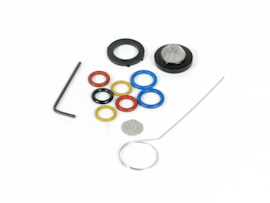
How to install a pressure washer O-ring kit
O-rings seal fittings on the pressure washer pump. Damaged seals allow water to leak from the pump. Follow these steps t…
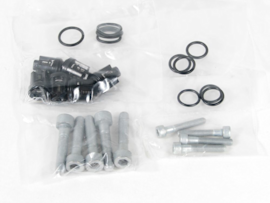
How to install a pressure washer check valve kit
Air in the inlet water supply can damage the check valves. If the pump won’t build up pressure due to damaged check valv…
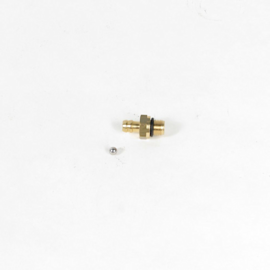
How to install a pressure washer chemical injection kit
The chemical injection valve draws detergent into the pump. If it’s not drawing detergent, use a repair kit to replace t…
Articles and videos for gas pressure washers
Use the advice and tips in these articles and videos to get the most out of your pressure washer.

Learn about all the convenient features on our Sears PartsDirect website that make your parts purchases easier.…

Learn about a new feature added to the Search Bar on Sears PartsDirect…
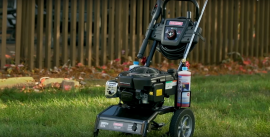
Follow this advice to winterize your pressure washer.…